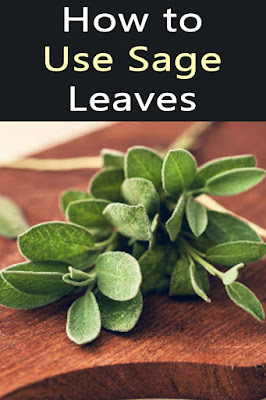Sage (Salvia officinalis) is a versatile herb known for its culinary, medicinal, and aromatic properties. Here’s a guide on how to use sage leaves in various ways:
1. Culinary Uses
A. Fresh Sage Leaves
- Seasoning: Fresh sage leaves can be chopped and added to a variety of dishes such as stuffing, soups, and stews. Their robust flavor complements poultry, pork, and sausages.
- Infusions: Add a few fresh leaves to olive oil or vinegar to create flavored oils and vinegars. Let it steep for a few weeks before using.
- Garnish: Use whole fresh leaves to garnish plates or drinks for an aromatic touch.
B. Dried Sage Leaves
- Spices: Dried sage is often used in spice blends, particularly in seasoning mixes for meats and poultry. It pairs well with other herbs like rosemary and thyme.
- Tea: Sage tea is a soothing drink. Steep dried leaves in hot water for 5-10 minutes. Add honey or lemon for extra flavor.
- Baking: Incorporate dried sage into bread dough or scone batter for a savory twist.
2. Medicinal Uses
A. Digestive Aid
- Sage has been traditionally used to aid digestion. A tea made from sage leaves can help relieve indigestion and bloating.
B. Anti-Inflammatory Properties
- Sage contains compounds with anti-inflammatory properties, making it useful for soothing sore throats and mouth inflammations. Gargle with sage tea to alleviate symptoms.
C. Cognitive Benefits
- Studies suggest that sage may enhance memory and cognitive functions. Consuming sage tea or adding sage to your diet might offer these benefits.
3. Aromatic Uses
A. Aromatherapy
- Sage essential oil, derived from the leaves, is used in aromatherapy to promote mental clarity and relieve stress. Use it in diffusers or add a few drops to a bath.
B. Smudging
- Smudging is a traditional Native American practice where dried sage bundles are burned to purify the air and ward off negative energy. Light the bundle, let it smolder, and move it around your space.
4. Gardening Uses
A. Companion Planting
- Sage is an excellent companion plant for many vegetables, particularly carrots and cabbages. It repels pests like cabbage moths and carrot flies.
B. Attracting Pollinators
- Sage flowers attract bees and butterflies, which are beneficial for pollination in your garden.
Tips for Using Sage
- Harvesting: For the best flavor, harvest sage leaves in the morning after the dew has dried but before the heat of the day.
- Storage: Store fresh sage leaves in the refrigerator wrapped in a damp paper towel. Dried sage should be kept in an airtight container in a cool, dark place.
- Cooking: Sage has a strong flavor, so use it sparingly. A little goes a long way.
Conclusion
Sage is a remarkable herb with diverse uses in the kitchen, medicine cabinet, and garden. Whether fresh or dried, its unique flavor and beneficial properties make it a valuable addition to any home. Start incorporating sage into your daily routine and enjoy its many benefits!

